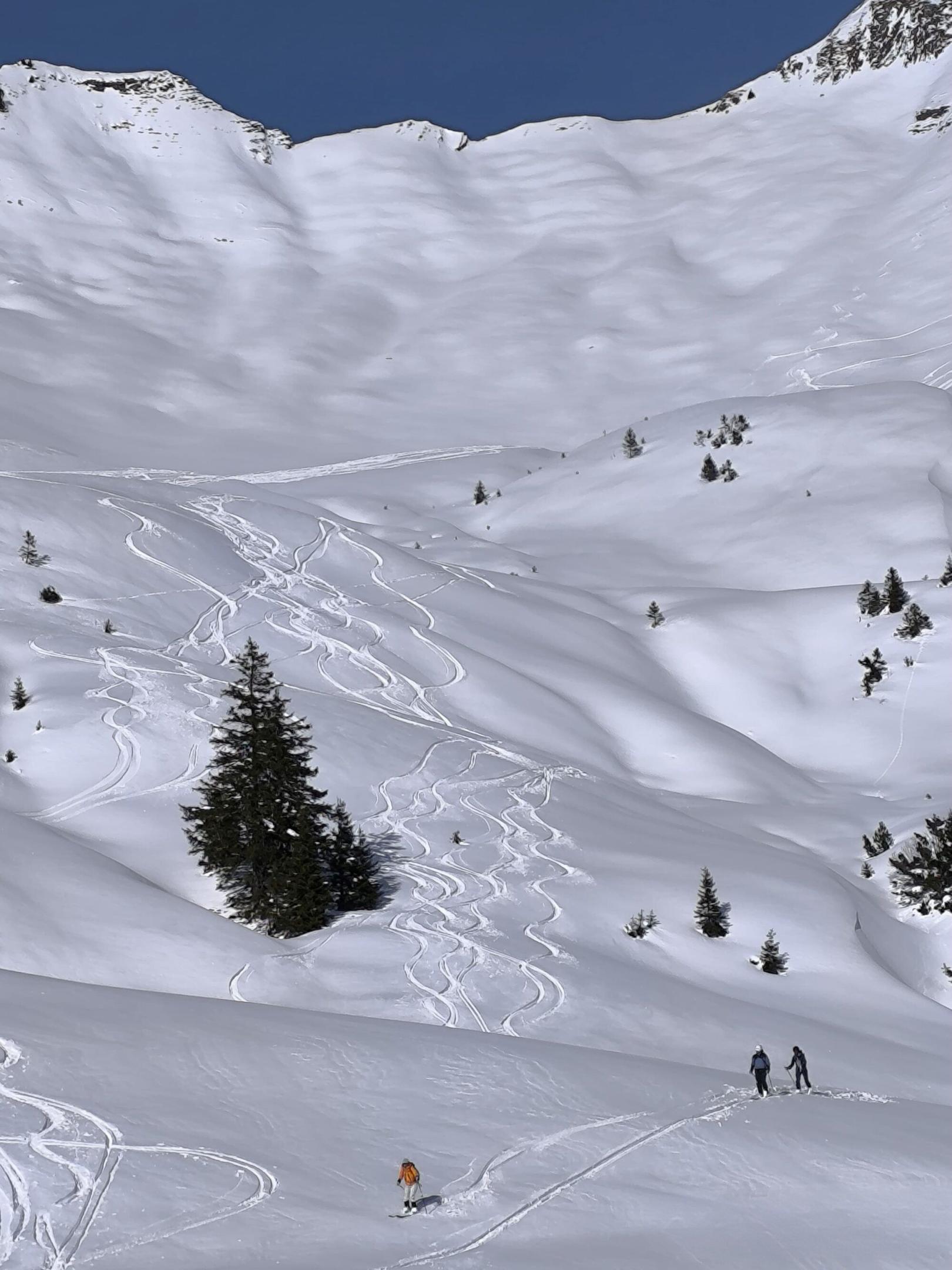Enjoying ski tours safely: planning, equipment and behavior for perfect days in the snow
Ski tours are simply wonderful. They are wonderful and they are mountain sports in their purest form. Anyone who has ever skied up a mountain will appreciate the peace and quiet in the snow-covered mountains, the panoramic views and, of course, the subsequent descents in untouched powder snow.
Why safety is essential on ski tours
But these experiences are not without risk. Avalanches, weather changes and the challenges of nature require ski tourers to be carefully prepared. Safety is therefore not a bonus, but a must.
Time and again, tragic accidents occur on ski tours due to a lack of preparation, inadequate equipment or wrong decisions. But that doesn't have to be the case - with the right planning, equipment and training, risks can be minimized.
Mandatory equipment for every ski tour: checklist and tips
The right equipment determines the success of your tour and, in an emergency, even life and death.


Here is a checklist of the most important items:
Mandatory equipment:
o Ski skins and ski poles
o Avalanche transceiver (at least 3-antenna technology) - ideally, do not use devices that are more than 15 years old. It is also advisable to ask the manufacturer for updates before the start of the season. Always make sure that the batteries are at least 80 percent full.
o Avalanche shovel (made of metal)
o Probe
o Ski helmet
o Cell phone
o Crampons
Additional safety:
o (double version for emergencies)
o
o Weatherproof clothing (hardshell), e.g.
o Additional insulation layers, e.g.
Useful extras:
o Map and compass
o GPS device and power bank
o Snow saw (integrated in some shovels)
o Cable ties
o Multitool
o Thermos flask with warm, sweetened tea
o Snacks such as dried fruit and nuts
o Sun cream
Before every tour, check that your equipment is complete and in good working order!
How do I wear the avalanche transceiver correctly?
You should always carry the avalanche transceiver directly on your body, under a layer of clothing or in your trouser pocket if you can close it with the zipper. It is also important that electronic devices such as cell phones, helmet cameras, sports watches or the electronic airbag system are at least 20 centimeters away, preferably 50 centimeters, because they can interfere with the antennas of the avalanche transceiver. Even on supposedly easy tours, you should always have an avalanche transceiver with you, experts recommend.
The avalanche transceiver check
An avalanche transceiver check is mandatory before setting off into the open terrain. This ensures that your avalanche transceiver is transmitting and receiving correctly - and that your tour partners are also correctly equipped. The check is carried out in two steps: First, you check as a group whether all devices are transmitting, then everyone checks the reception function individually. Also check the battery level! A functioning avalanche transceiver can save lives in an emergency - but even more important are your planning, your avalanche knowledge and a prudent choice of tour.
Avalanche transceiver search: How the rescue works in an emergency
Avalanches are one of the greatest dangers when ski touring or freeriding in alpine terrain. Anyone out and about in the mountains should not only have avalanche equipment with them, but also know exactly how an avalanche transceiver search (avalanche transceiver search) works. Because in an emergency, every second counts.
Here you can find out how to act correctly if an avalanche has occurred and a person has been buried.
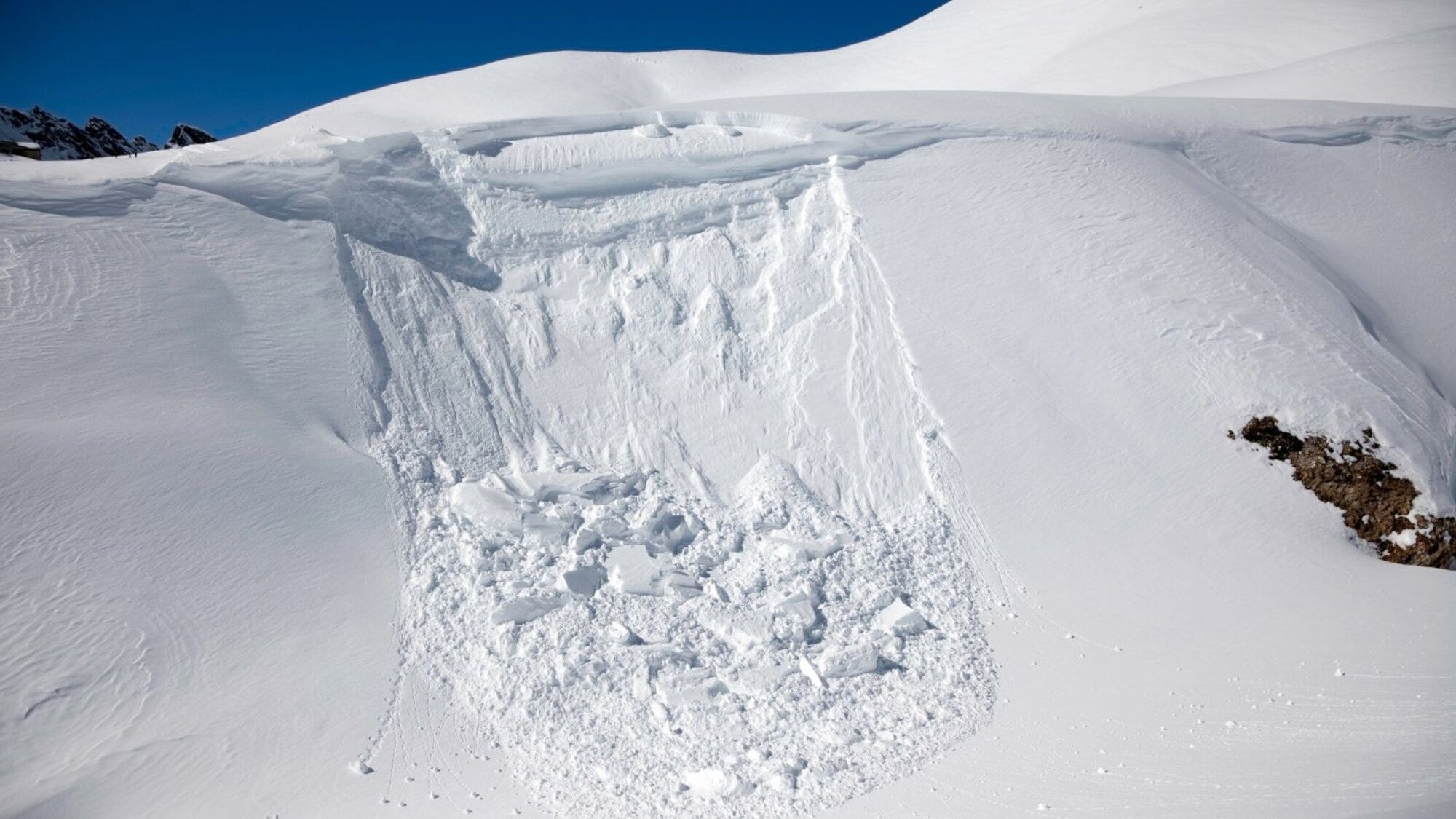

1. Get an overview and pay attention to safety
The first thing to do after an avalanche is to stay calm and get an overview.
Important first steps:
Check your own safety: Is there still a secondary avalanche? Is the slope stable? Make an emergency call: If possible, alert the rescue services immediately (emergency numbers: 112 or 140 in Austria). Remember last sighting: Where was the buried person last seen? This information is essential for the search!
If you are traveling with several people, it is important to clarify the roles. One person makes the emergency call and communicates with the rescue services, the most experienced person carries out the avalanche transceiver search.
2. Set the avalanche transceiver to "search"
All searchers switch their avalanche transceiver to search mode. The person taking the lead begins the search at the point of the last sighting and moves slowly and systematically down the slope.
3. Signal search (rough localization)
In signal search mode, you try to receive the first signal from the victim's avalanche transceiver.
Important:
- Hold the device at a distance of approx. 1 m above the snow
- Zigzag down the slope
- Keep moving at approx. 20 km/h
- As soon as the avalanche transceiver receives a signal (usually from a distance of 40-60 m), continue walking slowly and pay attention to the direction arrows and distance information
4. Rough search (narrowing down the position)
Now follows the rough search to narrow down the exact burial point.
The avalanche transceiver should be held at stomach height. The movements become slower and more controlled. Follow the avalanche beacon arrow and the distance display consistently. As soon as the distance drops below 3 meters, hold the avalanche transceiver at ground level and search for the strongest signal in a looping motion.
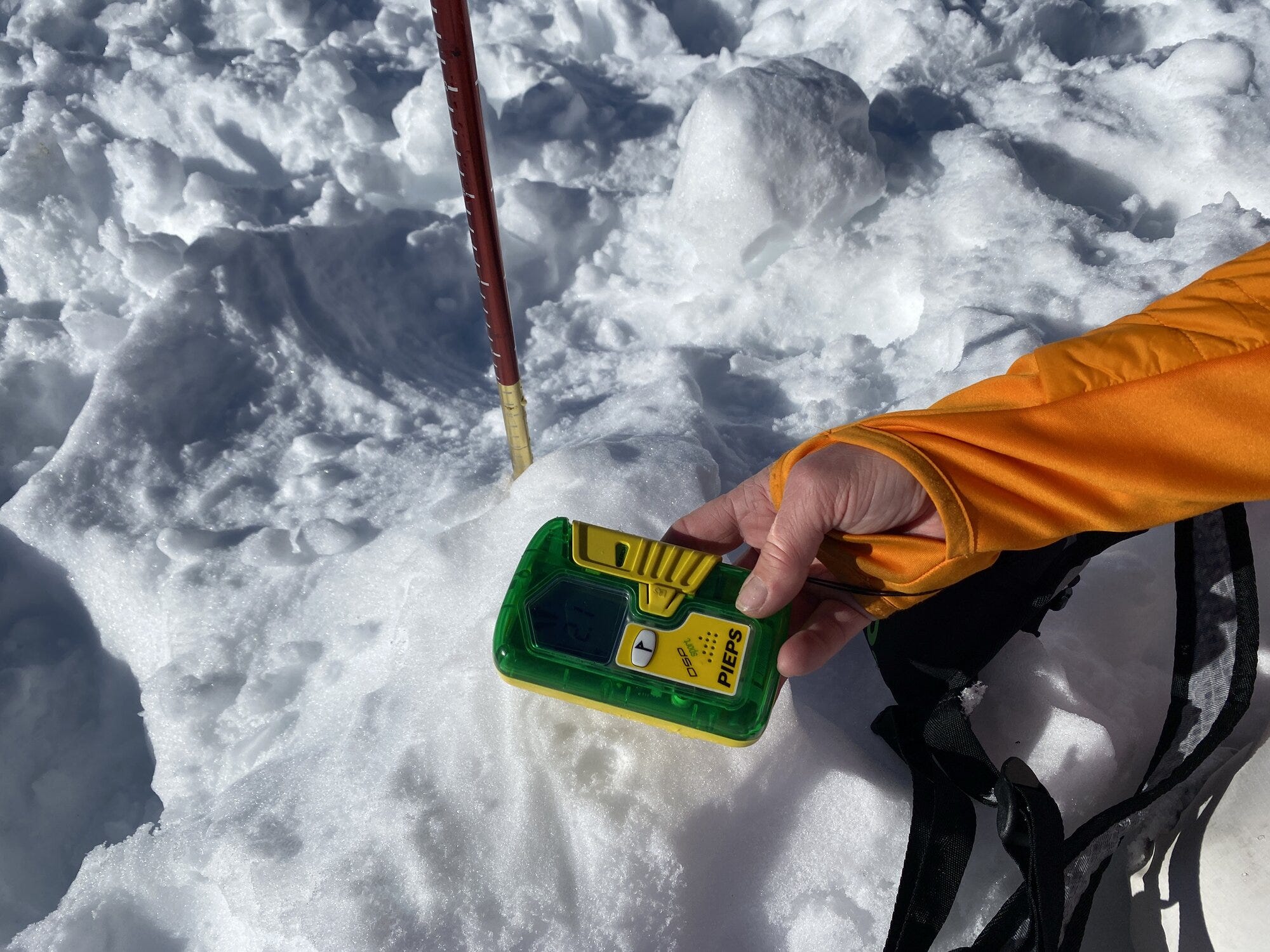

5. Fine search (exact localization)
Here, the exact burial point is determined to within centimeters.
Procedure:
- Hold the avalanche transceiver directly above the snow (a few centimetres away)
- Move slowly in a criss-cross pattern to find the smallest numerical value
- Hold the device flat, do not tilt it!
The smallest number (approx. 0.3-0.5 m) marks the point at which you are probing.
6. Probing (exact depth determination)
Now the avalanche probe is used.
Probe correctly: Probe vertically into the snow (not at an angle!) Probe in a grid of 25 cm around the fine search point Feel the resistance - is it soft (snow) or hard (body, equipment)? If you get a hit, leave the probe in place!
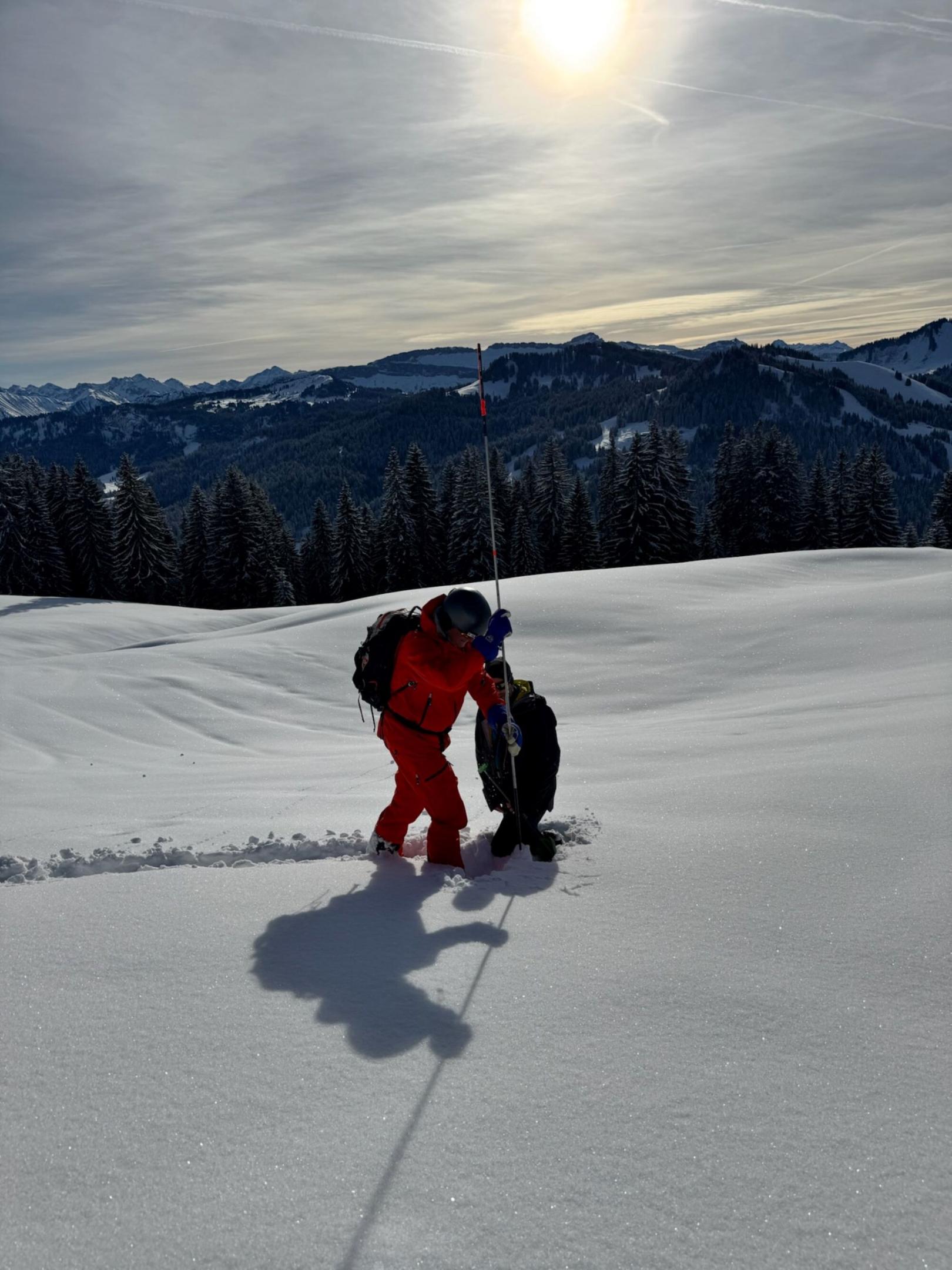

7. Shoveling (quick and efficient excavation)
Shoveling is the most time-consuming part of the rescue - and often the biggest time waster.
⛏ Shovel efficiently:
- Do not dig directly from the top, but start on the slope side in a V-shape
- Work with a shallow shovel angle from about 1.5 times the burial depth
- Pull out snow blocks, do not just shovel loosely
- Several rescuers work alternately to avoid exhaustion
The aim is to free the buried person as quickly as possible, especially the head and chest area, so that they can breathe again.
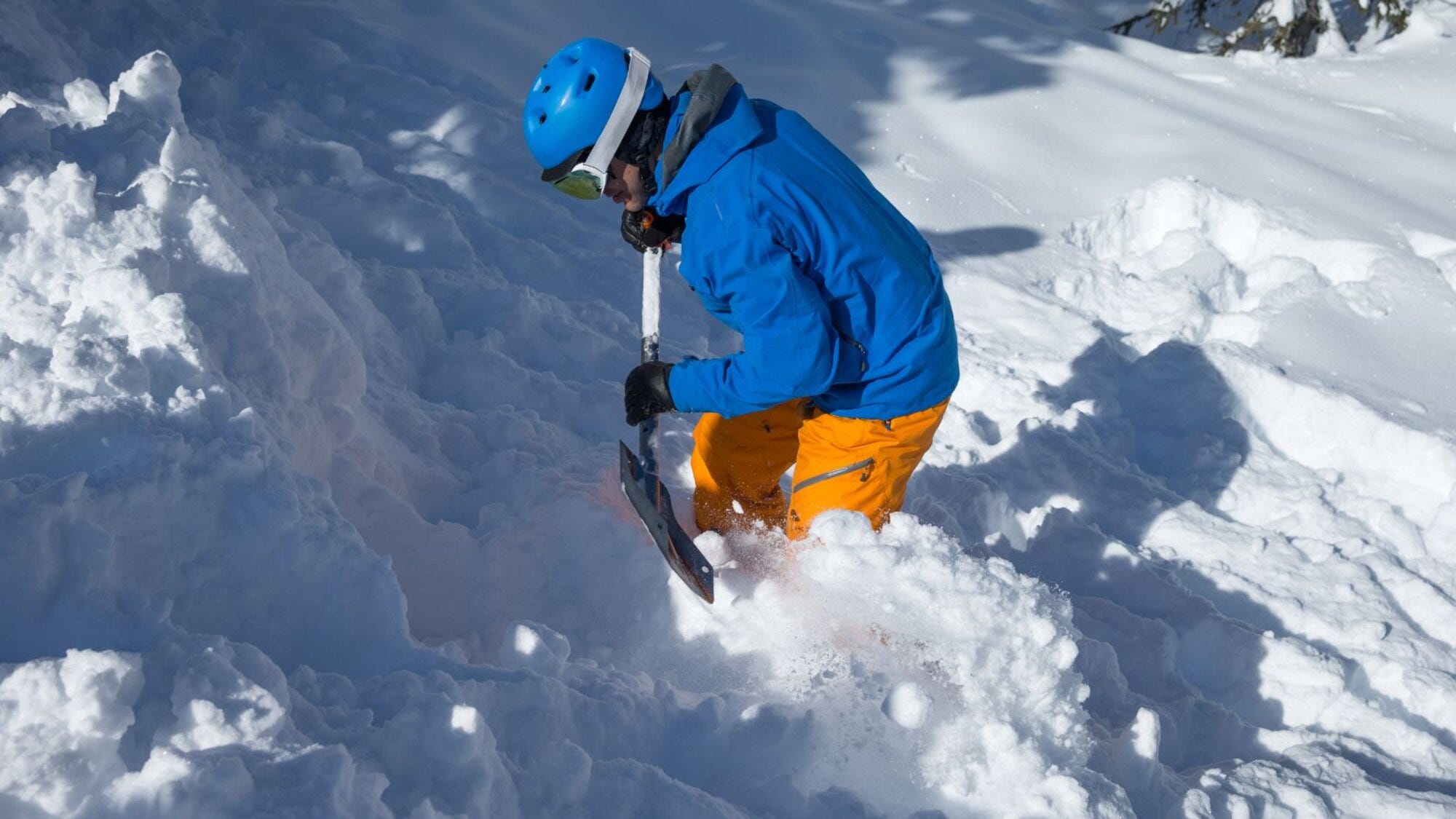

8. First aid and rescue
As soon as the person is exposed, it is important to check their breathing. If necessary, life-saving measures must be started immediately.
Important first aid measures:
- Clear airways, remove snow from mouth and nose
- If not breathing → start cardiopulmonary resuscitation (CPR)
- Put on warm clothing or initiate warming measures, e.g. use bivouac sack and rescue blanket
- Wait for rescue
Conclusion: practicing saves lives!
The best emergency equipment is useless if you can't use it. That's why it's crucial to practise avalanche searches regularly - ideally with an avalanche course or in training camps. Because in an emergency, every second counts, and acting quickly and correctly can save lives!
According to the latest findings, the survival phase is only around 10 minutes.
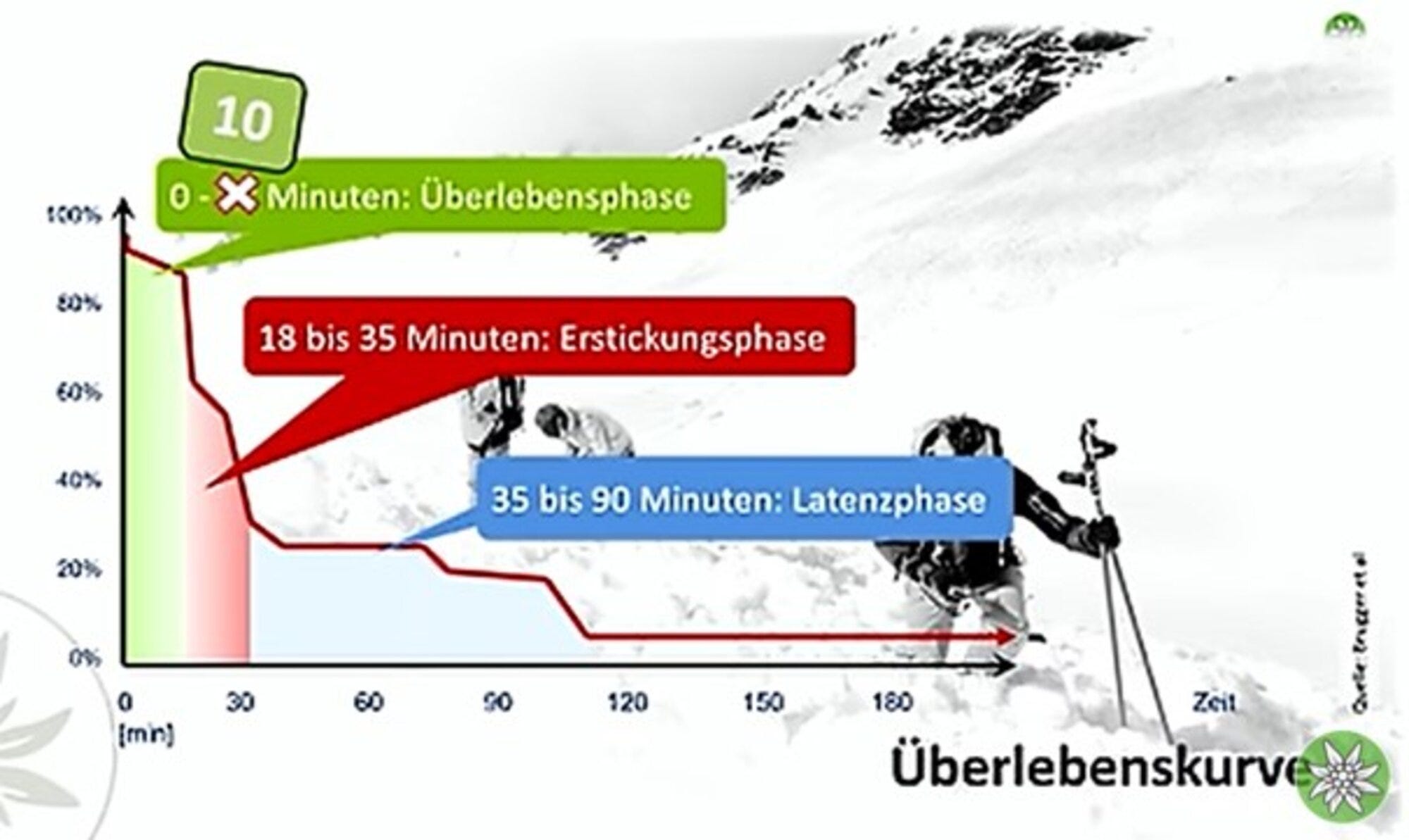

Group dynamics and responsibility: why clear roles are crucial on tour
When you are out and about with a group, it is essential to have a clear division of roles. It should be clear from the outset who makes the decisions - this is usually the tour leader. They are responsible for the safety of the entire group and must also make unpopular decisions when in doubt, such as turning back if the weather changes or if someone is no longer able to keep up.
A common mistake is to cling to a goal that was originally set. Promises such as "We can reach the summit today" can create pressure and tempt the group to continue despite poor conditions. What is needed here is a leader who assesses the situation objectively and, if necessary, points out alternatives. Because in the end, what counts is not whether everyone reaches their desired destination - but that everyone comes back safe and sound.
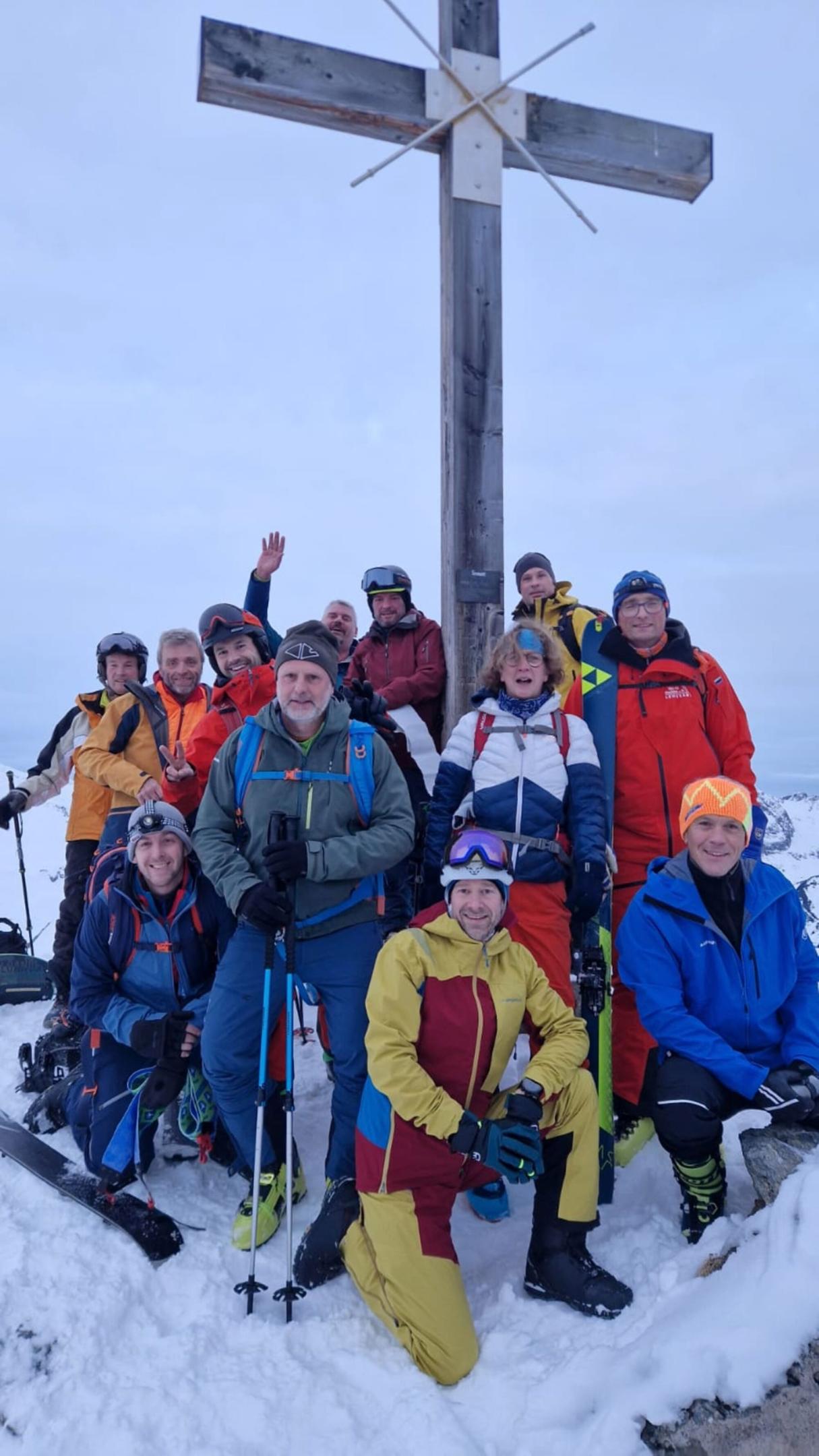

Conclusion: Start well prepared in the snowy mountain world
Ski tours are an incomparable adventure that you can enjoy safely and sustainably - if you are well prepared. Make sure you have high-quality equipment, practise regularly and take the time to plan thoroughly. That way, nothing will stand in the way of your perfect day in the snow!
You can find ski touring equipment for your perfect ski tour here:
Further information:
Snow camps are offered by the SAAC.
General information & courses at the German Alpine Club.
Must see: Avalanche update 2024/25from the Austrian Alpine Association ÖAV with Michael Larcher.
Video tutorial from the Austrian Alpine Association ÖAV on the avalanche search procedure.
Video tutorial on the avalanche transceiver check from the ÖAV.
